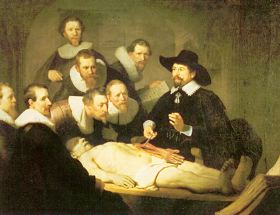
Seminar on Brain, Behavior, and Conscious Experience
ICOS 351
Spring '99
Dr. Karl Pribram

The course is dedicated to filling the "gap" between psychological processes and brain functions. Data are organized within a theoretical frame that recognizes different processing levels reaching from neural membranes, through neural circuits and systems, to behavioral and experiential scales of investigation. Observations and results of experiments in neuroanatomy, neurophysiology, neuropsychology and cognitive science form the database, simulations with massively parallel distributed processing programs provide techniques and theoretical frames. The 200-year historical perspective during which the "gap filling" has taken place provides a fascinating account that provides guidelines for future inquiry.
Texts:
Pribram, K.H. (1971)Languages
of the Brain: Experimental Paradoxes and Principles in
Neuropsychology. Englewood Cliffs, NJ: Prentice-Hall; Monterey,
CA: Brooks/Cole, 1977;
New York: Brandon House, 1982.
Pribram, K.H. (1991) Brain and Perception: Holonomy and Structure
in Figural Processing. New
Jersey: Lawrence Erlbaum Associates, Inc.
Texts will be supplemented by papers on color vision; independent component
analysis; learning
and memory.
Outline of Course:
A. Two Types of Brain Process: Circuits and Webs
1. Neurons
2. Teledendrons and Dendrites
3. Synapses and Ephases
B. Sensory Driven Processes
1. Brain systems involved in
seeing, hearing, and touching
2. Brain systems involved in
locating: occulocentric, object-centered, and egocentric spaces
C. Achievement
1. Muscle contraction, movement
and action
2. Brain motor systems: Delineating
action spaces and images of achievement
D. Emotion and Motivation
1. Drive stimuli and core brain
structures
2. Brain systems involved in
arousal, activation and effort
3. Brain systems involved in
the processing of episodes and events
E. Learning and Remembering
1. The deep and surface structure
of brain processing in remembering
2. Brain processes involved in
learning through reinforcement
3. Brain processes involved in
learning through imaging and imitation
F. Executive Processes
1. The brain systems involved
in the construction of a body-centered "me"
2. The brain systems involved
in the construction of a narrative "I"
G. Communication, Thought and Language
1. The language systems of the
brain
2. Brain systems involved in
language-like cultural processes such as music
3. Brain systems involved in
information processing, the processing of novelty and of meaning
H. The Mind/Body Problem
1. Conscious experience as the
origin of all inquiry
2. Conscious, subconscious and
unconscious determinants of behavior
3. Brain and the development
of consciousness and conscience